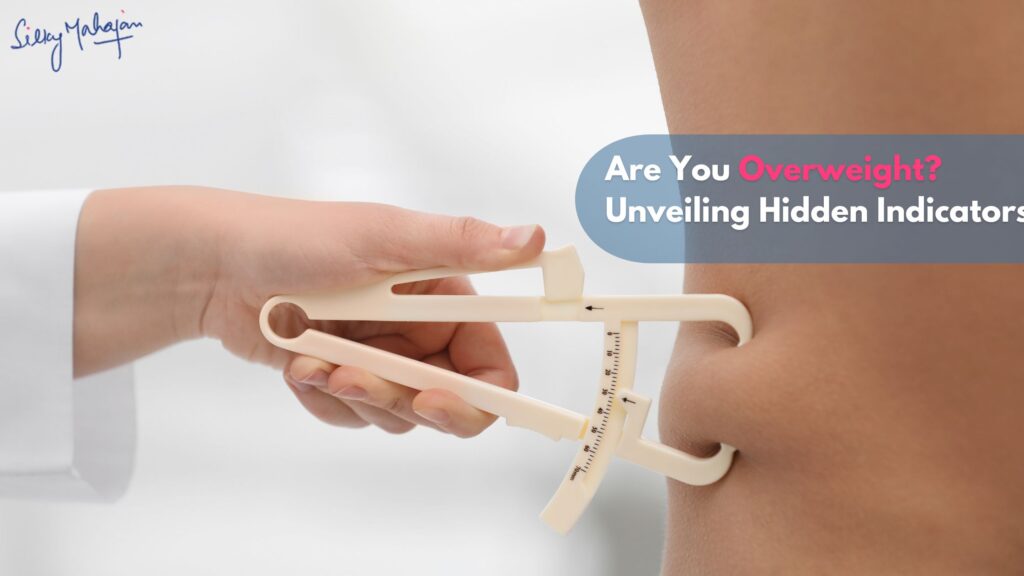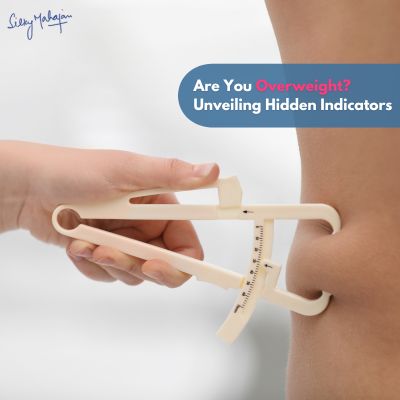
When it comes to recognizing signs of potential overweight, paying attention to subtle cues is crucial. In this article, we’ll delve into various indicators that may suggest you are carrying excess weight and could benefit from a closer look at your overall health.
Watch for Signs! Indicators of Potential Overweight
- Difficulty Sleeping
- Poor sleep patterns or difficulty falling and staying asleep can be linked to various health issues, including those related to excess weight.
- Joint Pain
- Extra weight can put strain on joints, leading to pain, especially in weight-bearing areas like the knees and hips.
- Excessive Sweating
- Overweight individuals may experience increased sweating, as the body works harder to regulate temperature due to added mass.
- Heat Intolerance
- Difficulty tolerating heat might be a sign that the body is working harder to cool down, which can be influenced by excess weight.
- Chronic Fatigue
- Carrying excess weight can lead to chronic fatigue, as the body expends more energy for daily activities.
- Depression
- Mental health can be affected by weight-related issues, with depression being a potential consequence of the challenges associated with excess weight.
- Shortness of Breath
- Excess weight can strain the respiratory system, leading to difficulty breathing and shortness of breath, especially during physical activity.
Check Your Waist Measurement
The circumference of your waist can provide valuable insights into potential health risks associated with excess weight. Fat stored around the abdomen, often referred to as visceral fat, is linked to various health issues, including heart disease, type 2 diabetes, and metabolic syndrome.
Interpreting Waist Measurements
- For Women: 35 Inches or More
- A waist circumference of 35 inches or more in women may indicate an increased risk of health issues related to excess weight.
- For Men: 40 Inches or More
- Men with a waist circumference of 40 inches or more are also at higher risk, emphasizing the importance of maintaining a healthy waist size.
Assess Your Waist-to-Hip Ratio
The waist-to-hip ratio is a valuable tool in gauging the distribution of body fat, providing insights into potential health risks associated with excess weight. This ratio considers the proportion of fat stored around the waist compared to the hips.
Interpreting the Ratio
- Moderate Range
- Men: 0.9 or Less
- A waist-to-hip ratio of 0.9 or less in men is considered moderate and generally indicates a healthier distribution of body fat.
- Women: 0.85 or Less
- Similarly, a ratio of 0.85 or less in women falls into the moderate range.
- Men: 0.9 or Less
- Increased Risk
- All Genders: 1.0 or Higher
- A waist-to-hip ratio of 1.0 or higher increases the risk of heart disease and other weight-related health issues.
- All Genders: 1.0 or Higher
Utilize BMI (Body Mass Index)
BMI is a widely used tool for assessing body composition and categorizing individuals into different weight categories. It’s calculated by dividing an individual’s weight in kilograms by the square of their height in meters.
Interpreting BMI Categories
- Underweight: Less than 18.5
- Individuals with a BMI below 18.5 are categorized as underweight, indicating potential health risks associated with insufficient body weight.
- Healthy Weight: 18.5-22.9
- A BMI falling within the range of 18.5-22.9 is considered healthy, reflecting a balanced body composition.
- Overweight: 23.0-27.4
- Individuals with a BMI between 23.0 and 27.4 are classified as overweight, indicating an excess of body weight.
- Obese: 27.5 or Higher
- A BMI of 27.5 or higher falls into the obese category, with an increased risk of chronic diseases associated with excess weight.
Considering BMI Limitations
While BMI is a useful screening tool, it may not account for factors such as muscle mass. Therefore, it’s essential to interpret BMI results alongside other indicators for a more comprehensive understanding of overall health. Regularly monitoring your BMI provides a straightforward way to gauge changes in body composition and take proactive steps towards a healthier lifestyle. Use our BMI calculator to know your current BMI.
Expert Tips By Nutritionist Silky Mahajan
Conclusion
Utilize our body fat calculator to find your ideal body fat percentage. Being proactive about recognizing signs of potential overweight empowers you to take control of your health. Utilize these indicators as a starting point for self-assessment, and remember, seeking guidance from healthcare professionals, like a dietitian or doctor, is always a wise step toward a healthier lifestyle.
In case of any related query to healthy nutrition or weight loss book an online appointment with Dt. Silky Mahajan. Please send us an email at info@foodsandnutrition.in or call on 7829999400 between 10:00 AM IST – 7:00 PM IST (Mon – Sat). Follow us on facebook & instagram for latest updates.






